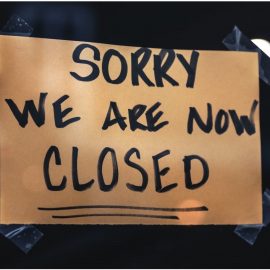

This article is an excerpt from the Shortform book guide to "Play Bigger" by Al Ramadan, Dave Peterson, et al.. Shortform has the world's best summaries and analyses of books you should be reading.
Like this article? Sign up for a free trial here.
How do you write a branding proposal? What is the point of proposing your brand?
When building a company, one of the first things you need to do is create your company’s identity and brand. You might have to share your brand with investors, which means writing up a proposal.
Read below to learn how to write a branding proposal from the book Play Bigger.
Answer Questions to Determine Your Company’s Take
You need to ask yourself questions about your potential brand before learning how to write a branding proposal. These questions are: 1) How are your company and your product different from other markets and products? 2) How will you create the product? What’s your plan of action, and how will you achieve success? 3) How will you impact consumers and the world? What is your vision of the future? 4) What sort of identity do you want for your company? What’s your ideal culture? Who are your ideal employees?
(Shortform note: Answering the above questions requires you to have at least some components of your business already set up—for instance, you must have a company and product to be able to say how they differ from others. This is in accordance with the authors’ recommendation to build your company, market, and product at the same time and around each other: Your product informs your take, while in turn informs your market, and so on. This will also likely mean you’ll need to revise your take-over time as you adjust the three components of your business to each other. Thus, while flexibility is almost always an advantage in the workplace, it’s a necessity in the authors’ approach to building a company and market.)
Write Up and Share the Take
You’ll likely need to write multiple drafts of the take for internal review. Be brief and straightforward, and write in easily accessible language. Connect to an emotional need in the consumer—consider what future you can offer customers that they’ll want to be a part of. Think of your take as a movie trailer for your company: It must be short, informative, and generate excitement in the listener. Again, include the following elements in your take: your company identity, guiding principles, outlook, and story about how your company solves a problem differently than other companies. Once done, you should be able to present your take in 10 minutes or less in a brief document or across several slides.
Your take for your low-tech devices company might sound like this: “Our world is oversaturated with technology. It’s making us miserable, stressed, and sick (problem). We believe technology should be used to make people happier, not less happy (guiding principles), and that more of everything—apps, data, functionality—isn’t always better (outlook). We’re all about simplicity—it infuses everything we do within the company and with our products (identity). Our low-tech device is a manifestation of our beliefs: It lets you take care of critical tasks easily and on the go without making you addicted to your screen (how your company solves the problem differently).”
Crafting a Take Using the StoryBrand Method
While the authors provide some pointers on how to write up your take, they don’t provide detailed guidance—perhaps because writing the take falls more under the umbrella of creative writing than business management.
However, there are methodologies for crafting a strong story about your company, many elements of which overlap with creating a take and can thus be used for that purpose. One methodology is marketing expert Donald Miller’s storyline, which he describes in Building a StoryBrand. In a storyline, you create a story about the customer, who has a problem, and show how your company helps them solve that problem and change for the better.
You first describe the problem your customer has—a key element of the take. You then introduce your company as the customer’s guide to creating a better life—thus capturing your outlook, guiding principles, and company identity. Finally, you describe the transformation the customer undergoes after using your product—this is akin to the mindset shift your customer will experience.
If you’re struggling to write the take, you might use the storyline as a template and then tweak it to become a true take in the way the authors describe.

———End of Preview———
Like what you just read? Read the rest of the world's best book summary and analysis of Al Ramadan, Dave Peterson, et al.'s "Play Bigger" at Shortform.
Here's what you'll find in our full Play Bigger summary:
- Why financial success doesn't depend on education or intelligence
- Why the key to financial success lies in understanding human behavior
- How to create a financial strategy you can follow for decades






